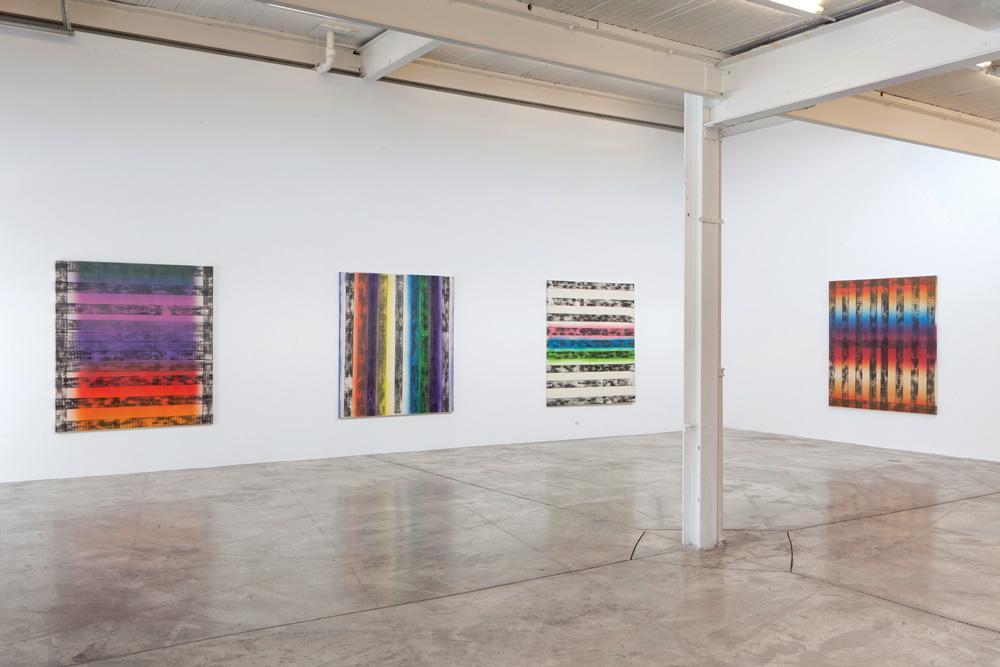There were 10 paintings in Robert Youds’s “handmade ultramarine mantra” exhibition—the titles of six of them carrying references to canonical culture-sites: Malcolm Lowry’s shack, Emily Carr’s retreat, Lawren Harris’s shelter, Arthur Erickson’s Gordon Smith house, Tom Thomson’s cabin and, the only non-Canadian citation, Jackson Pollock’s studio (the other four paintings are tondo-shaped, revolvable works, and refer, in their titles, to waterfalls in British Columbia).
Youds says that he considers the works—which are made up of stripes of colour—as pictorial constructs, and affords them “a rustic modernism, encoded with an urban patina of longing for a self once imagined and enabled within nature.”
The “handmade” part of the exhibition title might well be traceable to the fact that Youds employed wooden two-by-fours as simple “stamping tools” to make his stripes. The “mantra” of the title may well address the memorial, nostalgia-imbued elements of the exhibition, and perhaps, in particular, the degree to which supersaturated phrases such as “Pollock’s studio” can bring 75 years of art history flooding in.
Given the fact that, etymologically, “ultramarine” means “beyond the sea,” then it too has its place in the show’s wayward title, as an invitation to the kind of reverie that puts us back into history—at Lowry’s shack, say, or at Erickson’s Smith house.
In three of the culture-site paintings, the coloured (and black-and-white) stripes are horizontal. In the other three, they are vertical (the shorter lengths of two-by-four that have been stamped onto the tondos are all angled—like pieces of wood bobbing in wild water). Sometimes, reflection-like outwashes of colour spill onto the white stripes that are next to the coloured ones.
I’ve been using the term “stripe,” but of course these lengths of acrylic colour really aren’t stripes at all—and therefore these pieces are not usefully compared to works by Guido Molinari or Barnett Newman or any other stripe-ists. The “stripes” are simply coloured building elements.
What the paintings are most like, really, is the late Gerald Ferguson’s frottage paintings in reverse, where, instead of rolling pigment over boards placed under the canvas, Youds paints the boards directly and then presses them firmly onto the canvas. The result (in the case of either artist) is present image tinctured with previous uses and meanings. What you get, in other words, is Carpenter Gothic.
This is a review from the Summer 2013 issue of Canadian Art. To read more from this issue, visit its table of contents.









